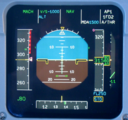Version BAD NETWORK/FIREWALL
lecture: What's It Doing Now?
The Role of Automation Dependency in Aviation Accidents

Legend has it that most airline pilots will at one time have uttered the sentence "What's it Doing now?", whenever the autopilot or one of its related systems did something unexpected. I will be exploring some high-profile accidents in which wrong expectations of automation behaviour contributed to the outcome.
"Pilot Error" is often publicly reported as "the cause" of an accident whenever a member of the flight crew did something which had consequences for the chain of events. We maintain that there is never a single cause, and every mistake a pilot may make has causes, and other factors contributing to it. We use the notion of a "necessary causal factor" to investigate the causes of accidents, and almost invariable there is a combination of both technical and human causal factors.
I will look in some detail at accidents in which a combination of a technical problem, misleading or missing indications, and inappropriate (but often understandable) crew actions contributed to an accident, and also some in which unprecedented actions of the human crew turned a problem with potentially fatal consequences into a survivable accident.
Automation in modern airliners has become so reliable and useful that it may be argued that it leads to a deterioration of hand-flying skills and, perhaps more importantly, of decision-making skills.
Sample accident cases will include Asiana Flight 214, Spanair Flight 5022, Turkish Flight 1951, TAM Flight 3054 and others. I will also briefly touch on technical and ethical problems with self-driving vehicles highlighted by the recent Tesla crash as well as increasing automation in General Aviation and its consequences.
In conclusion I will look at ways to improve safety and maintain the very high standard currently achieved in commercial aviation.
Info
Day:
2016-12-27
Start time:
18:15
Duration:
00:30
Room:
Saal 1
Track:
Science
Language:
en
Links:
- iCalendar
- Causal Analysis of SpanAir Flight 5022
- Examples of Reverse-Engineering
- Compendium of Computer-Related Incidents with Commercial Aircraft
Feedback
Click here to let us know how you liked this event.
Concurrent Events
- Saal 6
- A Data Point Walks Into a Bar
- Saal G
- Untrusting the CPU
- Saal 2
- Make the Internet Neutral Again
Speakers
| Bernd Sieker |